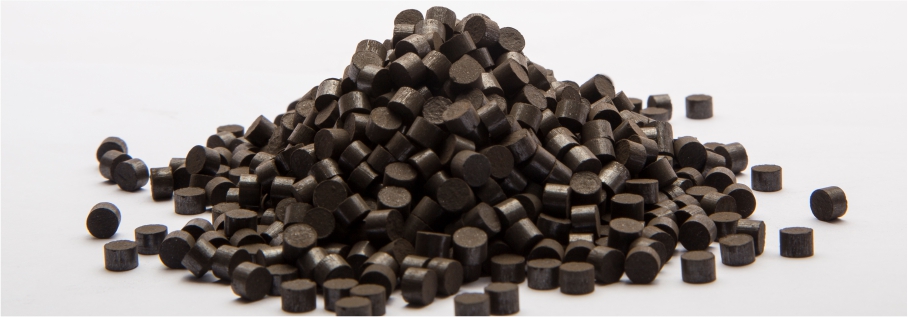A New Generation of High Temperature Shift Catalysts
Ammonia (NH3) is one of the most commonly produced industrial chemicals in all over the world. It is used in industry and commerce, and also exists naturally in humans and in the environment. Ammonia is essential for many biological processes and serves as a precursor for amino acid and nucleotide synthesis. In the environment, ammonia is part of the nitrogen cycle and is produced in soil from bacterial processes. The global industrial production of ammonia in 2018 was 175 million tons. However, the world wide capacity is as following:
- China 31.9%
- Russia 8.7%
- India 7.5%
- United States 7.1%
At present, ammonia is synthesized by a chemical reaction between nitrogen (N2) and hydrogen (H2) by the Haber-Bosch method. In the Haber-Bosch method, however, high temperatures (400-600℃) and high pressures (100-200 atm) are required for the chemical reaction between nitrogen and hydrogen. Furthermore, a large amount of energy is required and a large amount of CO2 is generated through the process, because hydrogen is now produced mainly from fossil fuels such as oil, coal and natural gas. Therefore, a new method of ammonia synthesis that replaces the Haber-Bosch method has been strongly expected to be developed. Figure 1 shows the simple scheme of Haber-Bosch process.

Fig. 1: The simple scheme of Haber-Bosch process
Under such circumstances, Professor Nishibayashi Yoshiaki, Research Director of CREST, succeeded in developing an innovative method to simply and rapidly synthesize large amounts of ammonia from nitrogen gas and water at room temperature and atmospheric pressure for the first time in the world. Figure shows the development of an innovative method to simply and rapidly synthesize significant amounts of ammonia from nitrogen gas and water at room temperature and atmospheric pressure.

Fig. 2: Producing ammonia from nitrogen gas and water at room temperature and atmospheric pressure.
Ammonia, a carbon-free resource can be split into nitrogen and hydrogen gas with the help of metal catalysts like Nickel (Ni). However, these reactions often require very high operating temperatures. Now scientists have developed a highly efficient calcium imide (CaNH)-supported Ni catalyst that can decompose ammonia at temperatures 100°C lower than what conventional Ni catalysts require. This promising new catalyst can get us closer to sustainably producing hydrogen fuel.
High temperature shift catalyst (HTSC)
The groundbreaking new formulation based on zinc and aluminum gives SK-501 Flex™ the unique ability to operate at any steam-to-carbon ratio, allowing producers to achieve record levels of plant efficiency and profitable increase in capacity. SK-501 Flex™ is also the first high temperature shift catalyst to be completely free of chromium, resulting in improved personnel safety and higher environmental standards.
Advantages
- Extended operational flexibility
- Higher production rates
- Improved energy efficiency
- Exceptional activity and stability
- No Fischer-Tropsch by-product formation
- No risk to personnel health and safety
- Low environmental impact
- Hassle-free start-up
Exceptional activity and stability
Through several years of industrial operation, SK-501 Flex™ has demonstrated exceptional activity and stability, exceeding the performance of conventional iron-based high-temperature shift (HTS) catalysts. The catalyst’s formulation of zinc oxide and zinc aluminum spinel has been known to catalyze the water gas shift reaction. The extra conversion and efficiency you get with the performance of this truly innovative product will improve your bottom line even more.
Iron-free formulation for extended flexibility
Extended flexibility of the plant steam-to-carbon ratio is a major feature of the new SK-501 Flex™ thanks to its iron-free formulation. Iron oxide has been the basis of all commercially viable HTS catalysts for decades, but it comes with a significant drawback – a minimum operating steam-to-carbon ratio. Below this minimum, the formation of iron carbides results in unwanted by-product formation and reduced catalyst strength. Based on zinc oxide and zinc aluminum spinel, SK-501 Flex™ is unique among HTS catalysts because of its stability under dry conditions. There is no risk of by-product formation from iron carbides at low steam-to-carbon ratios. This removal of the steam-to-carbon limitation by the HTS catalyst opens up new possibilities for plant optimization to an extent that until now was inaccessible. The results are unprecedented improvements in efficiency and profitability.
No risk to personnel health and safety and low environmental impact
Another major advantage of the new catalyst formulation is the complete absence of chromium, most notably the highly toxic hexavalent chromium found in all iron-based HTS catalysts. With SK-501 Flex™, plants avoid the potential risk that hexavalent chromium poses to personnel safety and to the environment during product handling and during operation. By avoiding this risk, plants also reduce the possibility of unplanned and costly downtimes as well as long-term liability issues. SK-501 Flex™ is a vanguard in the future of catalysis, meeting growing pressure from legislative bodies and safety standards while continuing to push the boundaries of operational excellence.
Hassle-free start-up
The new SK-501 Flex™ delivers quality performance from the first day of start-up. Activation is fast and typically takes place in connection with the start-up of the reforming section, saving you costly downtime. And with the absence of chromium and its associated risks, you can eliminate extra procedures at startup, making the process entirely hassle-free.

